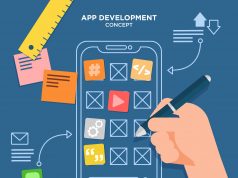In an increasingly digital world, the significance of a compelling user interface (UI) and a seamless user experience (UX) cannot be overstated. Whether it’s a website, mobile app, or software platform, businesses across the United States are continuously striving to enhance their digital presence. However, achieving top-tier UI/UX design often comes with a significant price tag. This blog aims to shed light on a savvy approach – outsourcing UI/UX design costs in the US without compromising on quality. By exploring the realms of design outsourcing, effective management practices, selecting the right partners, and optimizing project workflows, you can harness cost savings while delivering an exceptional user experience.
What is Design Outsourcing?
Design outsourcing, in the context of UI/UX, refers to the practice of entrusting the design elements of your digital project to external professionals or agencies rather than maintaining an in-house design team. This approach offers several advantages, including access to a global talent pool, cost-efficiency, and the ability to focus on your core business functions. However, to reap these benefits fully, it’s essential to establish sound UI/UX design management practices and carefully select your outsourcing partners.
Choose the right outsourcing partner

Selecting the right outsourcing partner is a crucial decision when aiming to reduce UI/UX design costs in the US. Your choice will significantly impact the quality, efficiency, and cost-effectiveness of your project. Here’s a comprehensive guide to help you make an informed decision:
Evaluate Experience and Expertise:
When seeking an outsourcing partner, assess their experience and expertise in UX/UI design. Look into the industries they’ve served and the complexity of the projects they’ve handled. An experienced partner is more likely to understand your specific needs and deliver high-quality work.Review Portfolio and Case Studies:
Carefully examine the outsourcing partner’s portfolio and case studies. This provides insights into their design style, the diversity of projects they’ve worked on, and the outcomes they’ve achieved. Focus on projects that resemble yours to gauge their ability to meet your design requirements.Check Client References:
Contact previous clients or read testimonials to gain deeper insights into the potential partner’s performance and reliability. Inquire about their experiences, communication, adherence to deadlines, and overall satisfaction with the results. Client references can provide valuable insights into the outsourcing partner’s operational excellence.Assess Technology and Tools:
Ensure that your outsourcing partner employs up-to-date design tools and technologies. The use of modern tools significantly impacts design efficiency and quality. A partner that invests in cutting-edge software and resources is more likely to deliver a contemporary user experience.Cultural Alignment and Communication:
Consider the cultural fit between your organization and the outsourcing partner. Shared values, work ethics, and communication styles can influence collaboration and project success. A partner that aligns with your culture can enhance teamwork and understanding.Scalability:
Evaluate the outsourcing partner’s capacity to scale resources according to your project requirements. Flexibility in resource allocation enables you to adjust to changes in scope or timelines without compromising quality. This scalability can result in cost efficiency by allowing you to pay for services as needed.Cost Structure and Transparency:
Discuss the partner’s cost structure and ensure transparency in pricing. Understand how they bill for services, whether it’s on an hourly basis, per project, or using another arrangement. Pricing transparency ensures effective budgeting and helps prevent unexpected expenses.
Choosing the right outsourcing partner necessitates diligent research and consideration. By selecting a partner with the appropriate experience, skills, and cultural alignment, you can maximize the value of your design projects while optimizing costs. This strategic choice ensures that your design endeavors in the US are both cost-effective and successful.
Break down your project into smaller phases
Breaking down your UI/UX design project into smaller, manageable phases is a fundamental strategy for reducing outsourcing costs while maintaining quality. Here’s why this approach is effective:
Improved Focus and Efficiency:
When you divide a large project into smaller phases, you allow your outsourcing partner to concentrate their efforts on specific aspects of the design. This focused approach enhances efficiency as designers can tackle one aspect at a time, minimizing the risk of errors or oversights that could necessitate costly revisions.Agile Development:
Adopting an agile development approach, where the project is divided into iterations or sprints, allows you to receive functional design components faster. This iterative process means you can start implementing and testing parts of the design sooner, making it easier to identify and address issues early in the project lifecycle when corrections are less costly.Controlled Budget:
Smaller phases provide more predictability in terms of budget management. Each phase can be budgeted separately, making it easier to allocate funds and track expenses. This approach prevents budget overruns by ensuring that you only spend what’s necessary for each specific phase.Risk Mitigation:
By tackling a project incrementally, you reduce the overall risk associated with outsourcing. If a particular phase encounters challenges or needs revisions, the impact is limited to that phase, rather than affecting the entire project. This approach minimizes the potential for costly project-wide delays.Flexibility:
Breaking down your project allows for flexibility in adapting to changing circumstances or new insights. As you progress through phases, you can incorporate feedback and insights gained from earlier stages into subsequent ones, resulting in a more refined and effective design.
Dividing your UI/UX design project into smaller phases is a strategic approach to outsourcing that enhances focus, efficiency, budget control, risk management, and flexibility. It empowers you to receive tangible results faster and make informed decisions throughout the project’s lifecycle. This method ensures that you maximize the value of your outsourcing investment while minimizing unnecessary costs.
Provide clear and concise requirements

To ensure that your requirements are clear and concise, start by crafting a detailed project brief. This document should encompass your project goals, target audience, brand guidelines, and scope. Specify what you want to achieve with your design, including any unique features or functionality you require. Visual aids, such as wireframes, mockups, or reference designs, can significantly enhance clarity. They provide a visual representation of your ideas, aiding designers in better understanding your vision.
Specify deliverables at various stages of the project, from initial concepts and mid-stage prototypes to final designs. Clarity about what you expect as outcomes at each milestone helps manage expectations and prevents misunderstandings. Additionally, setting realistic timelines and including them in your requirements is crucial. Clear deadlines and project milestones ensure that the project remains on track, reducing the potential for additional costs associated with delays.
Lastly, while maintaining clarity is vital, be open to feedback and suggestions from your design team. Collaboration can lead to innovative solutions and potentially cost-saving ideas. It’s a two-way dialogue that can enhance the quality of the final design while adhering to your budget constraints.
Negotiate a fair price
Negotiating a fair price with your outsourcing partner is a pivotal step in the journey to reduce UI/UX design costs without compromising on quality. Here’s a more detailed look at this critical aspect:
Market Research and Benchmarking:
Start by conducting thorough market research to understand the standard rates for UX/UI design services. This knowledge will serve as a valuable benchmark during negotiations, allowing you to identify competitive and reasonable pricing. Avoid partners who significantly deviate from these benchmarks, as it may indicate quality concerns.Transparent Communication:
Establish a transparent and open line of communication with your outsourcing partner. Clearly articulate your budget constraints and expectations. Encourage your partner to provide a detailed breakdown of their pricing structure, including any potential additional costs or discounts based on the project’s scope and complexity.Emphasize Value Over Price:
While cost savings are essential, emphasize the value you seek from the partnership. Discuss how the outsourcing partner can enhance value through quicker project delivery, improved design quality, or ongoing post-project support. Sometimes, paying a slightly higher rate for superior service can result in substantial long-term savings and more successful collaboration.Flexibility in Pricing Models:
Explore various pricing models to determine which one aligns best with your project. Options may include fixed-price contracts, hourly rates, or payments tied to project milestones. Assess the project’s specifics and consider which pricing model offers the most cost-efficiency while ensuring quality.
Negotiating a fair price is a strategic process that requires careful consideration of both your budget and the value you aim to receive. By adhering to these principles, you can strike a balance between cost-effectiveness and quality, ultimately achieving a successful and cost-efficient UX/UI design partnership.
Use open-source software and tools
Open-source software and tools provide cost-effective alternatives without sacrificing quality or collaboration. For image editing, GIMP is a powerful substitute for Adobe Photoshop. Inkscape serves as a versatile open-source vector graphics editor akin to Adobe Illustrator. In 3D modeling and animation, Blender competes effectively with commercial software like Maya and 3ds Max.
For collaborative design, Figma offers cloud-based capabilities, while Gravit Designer provides web-based vector design and collaboration features. These tools not only cut software costs but also encourage diverse participation in design projects.
Conclusion
In conclusion, reducing outsourced UI/UX design costs in the US is not about compromising quality but rather optimizing resources and practices. By adopting efficient design management practices, choosing the right outsourcing partner, breaking down projects, providing clear requirements, maintaining effective communication, and negotiating fairly, businesses can navigate the challenges of cost while maintaining the integrity of their design projects. Embracing open-source software and tools further aids in achieving cost-effectiveness without sacrificing quality. In today’s competitive landscape, cost-effective design outsourcing is not just a strategy; it’s a necessity for businesses looking to thrive in the digital world.
Read more:


















